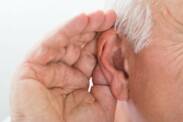Ear disorders
Ear disorders include
Ear disorders affect every part of the ear, that is, the outer ear, the middle ear and the inner ear, and diseases associated with the Eustachian tube or the positional auditory nerve are among those that are classified in this area. Some diseases arise from an infectious and parasitic background, others are inflammatory and non-infectious in nature, and several diseases are related to tumours or other non-inflammatory and non-infectious disturbances in the function of particular parts of the ear.
The anatomy and structure of the human ear includes three main parts. The ear is composed of the outer ear, the middle ear and the inner ear, with the middle ear connected to the nasopharynx via the Eustachian tube and the positional auditory nerve, which transmits sound to the brain, beginning at the end of the inner ear, but which also has an important function in maintaining and coordinating balance and body movement. Each part of the ear suffers from different problems, but some are also directly related.
Diseases of the outer ear
The outer ear is made up of several parts. These are the auricle, which is made up of cartilage, except for the lobe, where there is no cartilage, then the external ear canal, which is already a tube made up of both cartilage and bone, and the external (outer) ear ends and is separated from the middle ear by the tympanic membrane, which is the tympanic membrane. The role of the auricle is to direct sound waves into the ear canal, where the sound wave passes into the eardrum where it strikes it, amplifying it and passing on to the middle ear.
The outer ear is affected by diseases such as those related to the auricle, for example, auricular abscesses, boils, furuncles or carbuncles occurring on the skin of the auricle, sometimes also occurring on the external ear canal, also diseases include cellulitis of the external ear, perichondritis of the external ear, deformities of the auricle or the lobe, and deformities of the ear canal, for example, spitting of the external ear canal, and exostoses of the external ear canal.
But the most common problems include inflammation, namely malignant otitis externa, various infectious inflammations, diffuse or hemorrhagic, or cholesteatoma of the external ear. Acute inflammations of the external ear that are not of infectious origin, such as swimmer's ear or non-infectious acute inflammation of the external ear and ear canal, are also relatively common. Hardened cerumen in the ear canal, which is also non-infectious, is also a common problem.
A number of inflammations are caused by bacterial or viral infections that either originate from the external environment or have migrated here from the inner ear, and occasionally mycotic infections may also be involved. Also, overproduction of ear wax quite often affects humans. Treatment is usually local, unless there is chronic disease or penetration of disease into the middle ear. This also happens, for example, in choleastetoma or in infectious inflammations of the eardrum.
Diseases of the middle ear
The middle ear is made up of a system of cavities that are filled with air and lined with an inner mucous membrane. There are also several parts in the middle ear, namely the eardrum, followed by the three auditory ossicles, namely the hammer, the anvil and the stirrup, and finally the membranes that separate the middle ear from the inner ear. The Eustachian tube also emerges from the middle ear. Sound is transformed in the middle ear through the auditory ossicles into vibration and this travels to the inner ear.
The middle ear is affected by various types of inflammation, cysts, problems directly with the eardrum or also with the auditory ossicles. Both purulent and non-purulent inflammations of the mucous membranes and skin of the middle ear are very common, which can be subacute, acute or chronic, depending on the course, and can be caused by viruses, bacteria, allergic reactions or other non-infectious causes, as well as inflammations of the eardrum, such as myringitis or perforations of the eardrum caused by inflammation or trauma.
The perforation may be only a partial perforation of the tympanic membrane or a more serious complete perforation of the tympanic membrane. Several diseases in the middle ear are also related to the auditory tube, whether it is inflammation of the auditory tube, permanent obstruction and closure of the auditory tube or, conversely, permanent opening of the auditory tube due to pathological causes. There may also be a cholesteatoma in the middle ear, which is a cyst that usually penetrates here from the outer ear and can cause a number of complications and spreading inflammations, for example, of the bone part.
But the most common diseases in the middle ear are clearly the inflammatory diseases of the middle ear (otitis media). These inflammations can have both infectious and non-infectious causes, the more common being infectious with primary viral and secondary bacterial infections that enter here just through the auditory tube from the upper airway. They are accompanied by pain, temperature and fever, which is especially true in acute inflammation, and also by hearing impairment and usually by secretion in the form of pus, mucus or other secretions that are released through the ear or even through the tube.
Diseases of the Eustachian tube
The Eustachian tube is an auditory tube about 4 centimetres long in an adult and has a cartilaginous part and a bony part. It is largely made up of the bony part, being narrowest at the junction of the two parts. The function of this tube is to connect the nasopharynx and the middle ear cavity, thus allowing the pressure in the middle ear to be balanced with respect to the atmospheric pressure in the surroundings, and at the same time allowing any secretions and fluids to be drained away from the middle ear.
The Eustachian tube can be affected by several diseases either directly in it or in its immediate surroundings. Direct diseases include infectious inflammation of the Eustachian tube, non-infectious inflammation of the auditory tube, obstruction of the tube due to weakening of the walls, compression of the tube, stenosis of the auditory tube or stricture of the Eustachian tube, as well as excessive opening of the tube due to pathological causes, for example, due to hormones or irradiation.
Diseases that significantly affect the openness of the tube, but may not directly arise in it, are, for example, tumours or inflammation in its surroundings. Very often, for example, there is a permanent obstruction due to a tumour in the nasopharynx, which causes narrowing of the isthmus or complete closure of the Eustachian tube. However, the most common disease remains inflammation, which can also cause swelling of the mucous membrane in the tube, but above all it also affects the middle ear.
Diseases of the inner ear
The inner ear is made up of the bony labyrinth, then the cochlea, which is directly in this labyrinth, and also the equilibrium statokinetic, or sometimes called vestibular, organ. Within the cochlea is the organ of Corti, which contains hair cells that serve as receptors for hearing, and it is through these cells and the canals and sacs in the labyrinth that sound can be processed into a nerve impulse and passed on to the brain and central nervous system.
In addition, the inner ear includes the balance Vestibular apparatus, which is used to detect position and acceleration and also transmits balance information to the brain. The inner ear can be affected by both inflammatory and non-inflammatory diseases, either directly in its parts or in parts downstream of it, such as the vestibular organs and this whole apparatus. The most common diseases include otoscleroses such as non-obliterating otosclerosis, obliterating otosclerosis and cochlear otosclerosis.
Also affecting the inner ear are, for example, labyrinthitis, labyrinth fistula and various other dysfunctions directly related to the bony labyrinth in the inner ear, such as hypersensitivity, hypofunction or complete loss of function. Complete hearing loss as an acute or chronic trauma is dangerous. Within the inner ear, disorders of vestibular function also occur, which include vertigo, Meniere's disease, vestibular neuronitis, Lermoyez syndrome or benign paroxysmal disease.
Due to different types of diseases, problems in the inner ear can manifest themselves both as hearing impairment and problems with coordination or balance. Some diseases are even causally untreatable, so only the symptoms of the diseases are treated. The inner ear as a whole is also a relatively sensitive organ, so that if several diseases are diagnosed late, irreversible partial or complete damage to the specific organ function can occur.
Diseases of the positional auditory nerve
The positional auditory nerve is a nerve composed of two nerve fibres that are connected to the organ of Corti and to the vestibular apparatus. One nerve fibre thus transmits sound and nerve impulses about the sound received through all parts of the ear, the other nerve fibre transmits information and nerve impulses about the position of the head and body, about acceleration and movement, and also about balance. This makes the statokinetic nerve both unique and very important for the sensory perception of the environment.
Several diseases can afflict the auditory nerve. Some are directly related to it, others have a connection with the inner ear and significantly affect its function. These include disorders directly affecting the vestibular nerve, such as Lermoyez syndrome, Vestibular syndrome, paraxysmal positional Vertigo also called BPPV or classic Vertigo with its forms ranging from peripheral to otogenic.
Some of these diseases affect only one Vestibular apparatus in one ear, others are bilateral, such as Vestibular Syndrome, where the onset of symptoms is due to a disturbance in the balance of both apparatuses in both ears. The vestibulocochlear nerve itself is most commonly affected either by inflammation, which usually originates in the inner ear, or by tumour-type diseases which oppress the nerve and cause a problem with signal transmission.
Common diseases of the nerve directly include, for example, Vestibular Neuronitis, which affects this nerve isolated and unilaterally and is most often caused by a viral-type infection. However, tumours are a more serious problem, although this nerve is affected by malignant or benign tumours. These are either acoustic neurinoma, which is most often manifested by dizziness and less often by hearing loss, or neurofibromatosis, which is accompanied by the appearance of tumours at the end of other nerves in the body.












